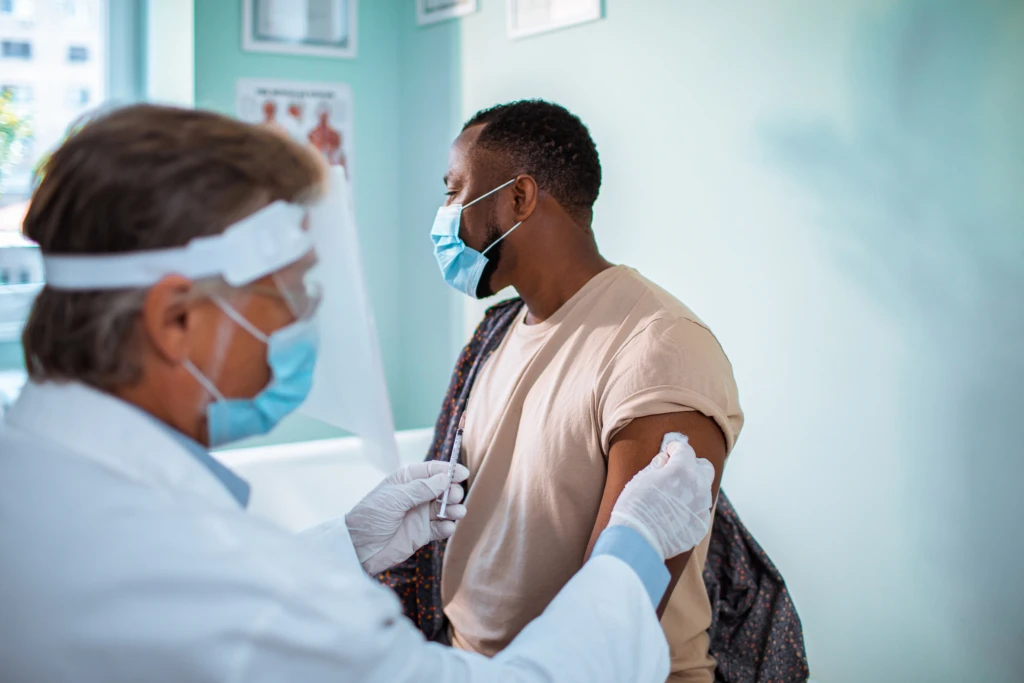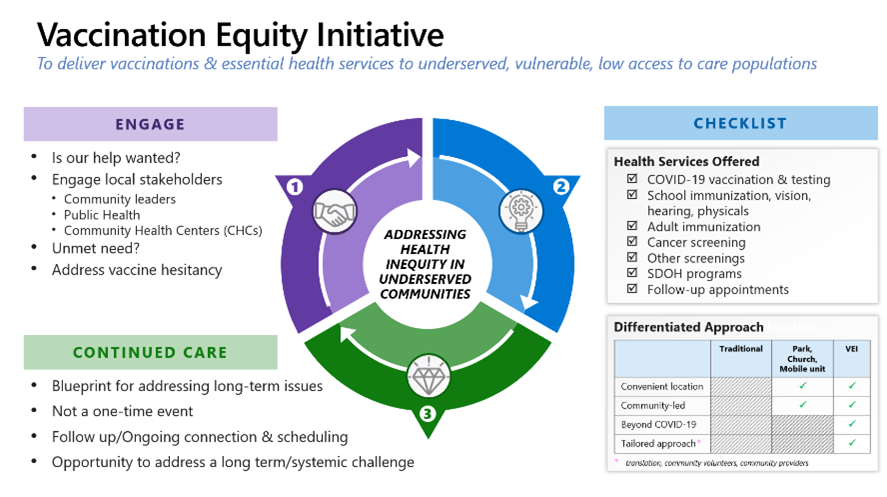
How technology is helping in the fight against the pandemic

The global pandemic is far from over, we want to take this opportunity to recognize and applaud the continued heroic efforts by front-line workers—healthcare workers, first responders, service workers, and others—around the world. They put their lives at risk every day to save patients and keep critical operations running.
While much of the recent news regarding has been discouraging, it is important to recognize there is some good news regarding the fight against COVID-19. And given the annual Healthcare Information and Management Systems Society (HIMSS) annual conference is almost upon us, this is an opportunity to reflect on how Public Health organizations have used technology to battle the greatest health crisis of our time. From the earliest days of the outbreak, Microsoft and our global partner ecosystem have used the latest technologies in new and innovative ways to help Public Health officials meet the challenge of COVID-19.
Public Health organizations around the globe continue to face challenges. The Delta variant, vaccine hesitancy, breakthrough infections, continued vaccine and resource shortages all are perpetuating this battle. Still, there have been bright spots, thanks to the tenacity, ingenuity, and unwavering commitment of Public Health professionals and organizations—as well as their use of the latest technology. This has enabled public health to attack the pandemic with unprecedented agility and responsiveness.
From the earliest days of tracking the COVID-19 outbreaks—long before a global pandemic was proclaimed—Public Health organizations began to be challenged with collecting increasing amounts of data from hospitals, clinics, and doctor’s offices as well as laboratories. This was often a cumbersome, lengthy process. It could take weeks or even months before the massive amount of data could be collected and analyzed to unlock meaningful insights. Technologies such as Azure Data Lake and Azure Synapse helped accelerate and scale data collection and analysis around the world.
Partners like Esri were leveraging their Azure supported ArcGIS Online system to help Public Health officials monitor the spread of the COVID-19 virus by visualizing that data on global maps and dashboards.
When accurate tests were created to detect the virus, many Public Health organizations turned to solutions built on Microsoft Dynamics and Power Platform to help them quickly roll out COVID-19 testing in their communities. This included registration systems to schedule the tests as well as test-result reporting.
As the disease spread, people turned to their Public Health organization for answers. This overwhelmed phone systems and took valuable human capital to address these questions at scale. Virtual assistants using Microsoft Azure Health Bot service played a vital role in reducing the burden on Public Health personnel, allowing them to focus on other aspects of the pandemic.
We all remember that early in the pandemic, ventilators, PPE, and other critical supplies were in short supply. Hospitals and clinics were experiencing a dire shortage of resources, while others were sitting on surpluses. Microsoft worked with public health, hospital networks and others to quickly create the Hospital Emergency Response solution, a Power Platform solution for healthcare emergency response. It allowed visibility into inventories across different care networks. As a result, public health was able to get supplies to the points of greatest need.
As early as last year, while pharmaceutical companies sent newly developed COVID-19 vaccines through clinical trials, Microsoft and our partners are working with Public Health officials to accelerate the pace of vaccine distribution and vaccinations with technology. This included taking steps to ensure distribution from the pharma manufacturing facilities to the vaccination sites.
Vaccine supply chain was just one aspect of this unprecedented global challenge. Prioritizing and scheduling initial appointments—along with the appropriate follow-ups and reminder communications—was a critical need. Then there was integration with existing immunization information systems to update patients’ vaccination records. Microsoft Consulting Services and Microsoft industry and product teams jumped into action to work with an ecosystem of partners around the world including Accenture, EY, Quisitive and their MazikCare Platform, and many others to deliver solutions to quickly and efficiently distribute and administer vaccines to every community.
Vaccine supply is still a challenge in many parts of the world. Even in areas where supply is sufficient, pockets of vaccine hesitancy have started to stall vaccination rates. To help address this major issue, a coalition of non-profits, healthcare organizations, and technology providers, working in collaboration with local communities and Public Health agencies, have embarked on the Vaccination Equity Initiative (VEI). The goal of VEI is to deliver vaccinations and other essential health services to those who are underserved, vulnerable, or have low access to healthcare. Further information about VEI, including how organizations can participate, may be obtained by contacting VEI@Microsoft.com.

One example of how technology can help address vaccine hesitancy comes from our partner Zencity. Zencity is using Azure Cognitive Services to analyze a variety of public data sources—including social sentiment—in order to help Public Health officials understand the underlying concerns of their citizens.¹ Using this insight, mayors, Public Health officials and other government leaders can create communication plans and outreach programs to overcome vaccine hesitancy.
As vaccine rates continue to increase globally and laboratory tests are widely available, worldwide efforts to reopen economies and restore international travel have also created an urgent need for secure, verifiable health information. Businesses, entertainment and sports venues, academic institutions and governments worldwide increasingly need a trustworthy way to verify vaccination status or laboratory test results for those returning to onsite activities and public spaces. Individuals who have been vaccinated or tested for COVID-19 want to access and store a free paper or digital copy of their records to easily carry and share, without fear of misplacing an immunization card or disclosing unnecessary information when sharing their results.
To fill this emerging need, in 2020 Microsoft joined in forming VCI, a voluntary coalition of public and private organizations committed to ensuring individuals have access to a trustworthy and verifiable copy of their COVID-19 vaccination records and test results. The VCI-developed SMART Health Cards framework is being used worldwide to create vaccine certificates that adhere to core principles, including interoperability, equity, privacy, and security.
While there is still a long way to go in the global fight against COVID-19, the new wave of cloud technology will play a significant role in defeating this crisis.
It will also help us prepare for the next one. Because this is not the last global virus we will see.
¹ Governing – “A Powerful Tool for Overcoming Vaccine Hesitancy”, May 19, 2021.




